What Happens to Your Baby Right After Delivery?
Contributed by: Kids Clinic
- Part 1: What Happens to Your Baby Right After Delivery?
- Part 2: What Happens at Your Baby’s First PD Check-up?
- Part 3: Managing Common Newborn Issues
- Part 4 & 5: Newborn Vaccinations
For mums who are giving birth soon, have you ever wondered what happens to your baby after delivery? In this article, our paediatrician (PD), Dr Simon Ng shares about the newborn examination process right after birth.
1. Check for heart abnormalities
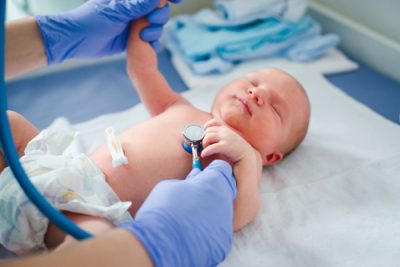
If the baby isn’t crying, the PD will usually try to auscultate the heart first. This is where the PD listens to the heart to ensure the heart rate, rhythm and sounds are normal. The PD will also listen to the right side of the chest to see if the heart sound is heard. The heart is usually located on the left side of the chest but sometimes, there is a situation where the heart is located on the other side of the chest and this alerts the PD that there is something wrong with the baby.
2. Observe the baby’s breathing
If a baby is breathing with a certain amount of effort, has a fast breathing rate, or if the baby’s chest sinks in with each breath that the baby takes, it signifies that there is a problem in the baby.3. Examine the umbilical cord
The PD will check if the umbilical cord has 2 arteries and 1 vein. This is important as in some cases, babies are born with only 1 artery and 1 vein. This will alert the PD that there is a problem and they will do further tests.4. Feel for a regular pulse at the leg
The PD will feel for the pulse in the baby’s inner thigh. This pulse is referred to as the femoral pulse. The PD ensures there is good pulse volume and a regular pulse rate. If the pulse is difficult to feel or very weak, the PD will have to run more tests.5. Palpate the abdomen for abnormally large organs
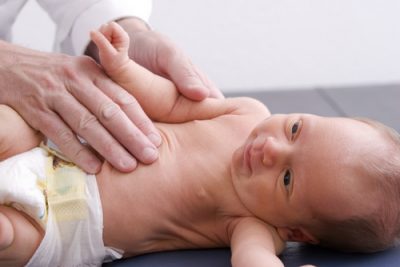
The PD examines the abdomen and usually look out for any abdominal distention. They will also palpate the abdomen to feel for any abnormal organ enlargement like the liver, spleen and kidney.
6. Examine genital parts and anus
The PD looks at the genitalia. In baby boys, they look at the scrotum and feel for the testes. They are looking for abnormal enlargement of the testes. They look at the penis and make sure the penile orifice is located in the proper position. They also examine the anus to make sure it is patent and is properly formed.7. Examine the neck to check on the collarbone and to ensure there are no lumps and swelling
8. Check if the ears are properly formed
The PD ensures there is no abnormal swelling or masses formed around the ear. In some babies, the external ear is not properly formed. In such cases, ear molding might be deemed necessary. To find out more about ear molding, visit Health Topics A to Z: Ear Molding9. Examine the eyes and face
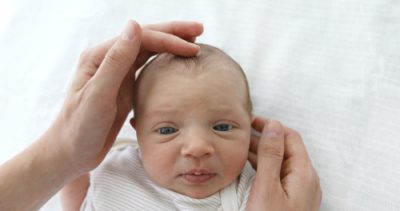
The PD examines the eyes to ensure they are normally developed. The PD will also observe the baby’s face to make sure there is no dysmorphism or abnormal features. If there are abnormal features, it may suggest some abnormal syndrome like for instance, Down Syndrome.
10. Examine the scalp
The PD looks at the scalp to check for any swelling or abrasion.11. Examine the back to make sure the spine is properly formed and there is no swelling
12. Check the colour of the baby to make sure it’s pink and not pale or blue
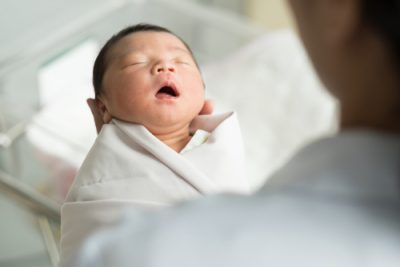
13. Elicit a Moro’s reflex in the baby
The PD will try and elicit a Moro’s reflex in the baby. In the Moro’s reflex, the PD will do a sudden extension of the baby’s neck and body. Then the baby will do an extension followed by a flexion movement of the arms. It should be a symmetrical movement on both sides. If the movement is not symmetrical, it might indicate a nerve problem in the baby.14. Examine the hips for any dislocation
15. Inspect the hands
The PD looks at the fingers to make sure there are 10 fingers, they are the correct length and there is no abnormal fusion of the fingers. The PD will also look at the creases on the palms to make sure they are normal.16. Inspect the toes
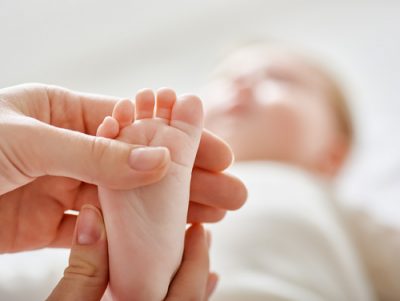
The PD inspects the toes. They ensure that there are 10 toes, check if they are the correct length and shape as well as ensure there is no abnormal fusion of toes.
17. Examine the inside of the baby’s mouth
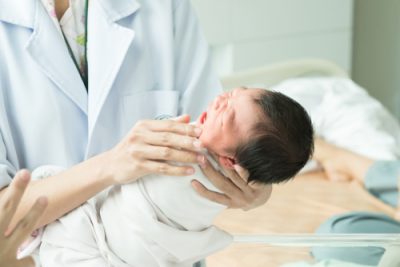
At any point in time, when the baby cries, the PD will examine the baby’s mouth to make sure the palate is properly formed and there’s no cleft palate. The PD also examines the gums and the tongue. The colour of the tongue should be pink and not blue.
Completion of Newborn Assessment
Once the newborn examination is done, Dr Ng wraps the baby carefully in a blanket and hands the baby over to the mum. He explains the outcome of the examination to the parents and addresses any other concerns they might have.
This encapsulates the first ever checkup your newborn will undergo to ensure they are in the pink of health. Keep a lookout for our next video, where our next PD shares with you on what happens at your child’s first PD visit after going home.
About Author
Dr Simon Ng Pau Ling graduated from the National University of Singapore (NUS) in 1985 with an MBBS (Bachelor of Medicine, Bachelor of Surgery) and subsequently obtained a Master of Medicine (Paediatrics) from NUS in 1990. He received his subspecialty training in Neonatal Intensive Care at the University of Cincinnati and Columbia University in the US under a Ministry of Health fellowship. Dr Ng is a specialist in the care and treatment of newborns and babies and is experienced in newborn screening, developmental assessment, vaccination and treatment of childhood illnesses.
Kids Clinic @ Mount Alvernia
820 Thomson Road #02-02 Mount Alvernia Hospital, Medical Centre A Singapore 574623Tel: (65) 6356 8143


